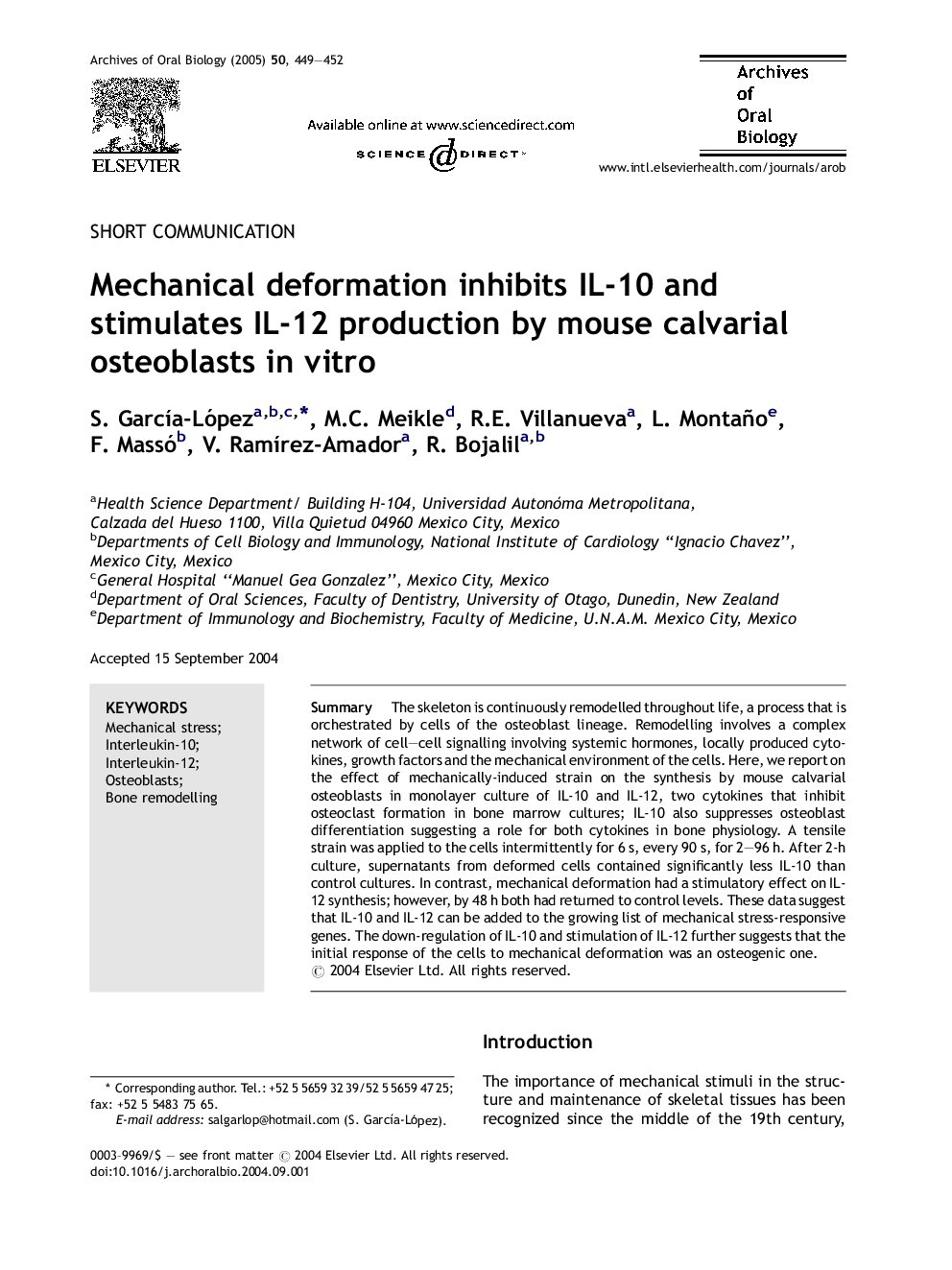| Article ID | Journal | Published Year | Pages | File Type |
|---|---|---|---|---|
| 9996703 | Archives of Oral Biology | 2005 | 4 Pages |
Abstract
The skeleton is continuously remodelled throughout life, a process that is orchestrated by cells of the osteoblast lineage. Remodelling involves a complex network of cell-cell signalling involving systemic hormones, locally produced cytokines, growth factors and the mechanical environment of the cells. Here, we report on the effect of mechanically-induced strain on the synthesis by mouse calvarial osteoblasts in monolayer culture of IL-10 and IL-12, two cytokines that inhibit osteoclast formation in bone marrow cultures; IL-10 also suppresses osteoblast differentiation suggesting a role for both cytokines in bone physiology. A tensile strain was applied to the cells intermittently for 6Â s, every 90Â s, for 2-96Â h. After 2-h culture, supernatants from deformed cells contained significantly less IL-10 than control cultures. In contrast, mechanical deformation had a stimulatory effect on IL-12 synthesis; however, by 48Â h both had returned to control levels. These data suggest that IL-10 and IL-12 can be added to the growing list of mechanical stress-responsive genes. The down-regulation of IL-10 and stimulation of IL-12 further suggests that the initial response of the cells to mechanical deformation was an osteogenic one.
Related Topics
Health Sciences
Medicine and Dentistry
Dentistry, Oral Surgery and Medicine
Authors
S. GarcÃa-López, M.C. Meikle, R.E. Villanueva, L. Montaño, F. Massó, V. RamÃrez-Amador, R. Bojalil,
